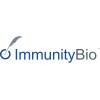QUILT-3.047: NANT Head and Neck Squamous Cell Carcinoma (HNSCC) Vaccine: Combination Immunotherapy in Subjects With HNSCC Who Have Progressed on or After Chemotherapy and PD-1/PD-L1 Therapy
Head and Neck Squamous Cell Carcinoma

About this trial
This is an interventional treatment trial for Head and Neck Squamous Cell Carcinoma
Eligibility Criteria
Inclusion Criteria:
- Age ≥ 18 years.
- Able to understand and provide a signed informed consent that fulfills the relevant Institutional Review Board (IRB) or Independent Ethics Committee (IEC) guidelines.
- Histologically-confirmed HNSCC with progression on or after chemotherapy and anti-PD-1/PD-L1 therapy.
- Eastern Cooperative Oncology Group (ECOG) performance status of 0 to 2.
- Have at least 1 measurable lesion of ≥ 1.5 cm.
- Must have a tumor biopsy specimen following the conclusion of the most recent anticancer treatment. If an historic specimen is not available, the subject must be willing to undergo a biopsy during the screening period.
- Must be willing to provide blood samples and, if considered safe by the Investigator, a tumor biopsy specimen at 8 weeks after the start of treatment.
- Ability to attend required study visits and return for adequate follow-up, as required by this protocol.
- Agreement to practice effective contraception for female subjects of child-bearing potential and non-sterile males. Female subjects of child-bearing potential must agree to use effective contraception for up to 1 year after completion of therapy, and non-sterile male subjects must agree to use a condom for up to 4 months after treatment.
Exclusion Criteria:
- History of persistent grade 2 or higher (CTCAE Version 4.03) hematologic toxicity resulting from previous therapy.
History of other active malignancies or brain metastasis except for controlled basal cell carcinoma; prior history of in situ cancer (eg, breast, melanoma, and cervical); prior history of prostate cancer that is not under active systemic treatment (except hormonal therapy) and with undetectable prostate-specific antigen (PSA) (< 0.2 ng/mL); and bulky (≥ 1.5 cm) disease with metastasis in the central hilar area of the chest and involving the pulmonary vasculature. Subjects with a history of another malignancy must have > 5 years without evidence of disease.
and Neck Squamous Cell Carcinoma Vaccine NantCell, Inc. Clinical Trial Protocol: QUILT-3.047
- Serious uncontrolled concomitant disease that would contraindicate the use of the investigational drug used in this study or that would put the subject at high risk for treatment-related complications.
- Systemic autoimmune disease (eg, lupus erythematosus, rheumatoid arthritis, Addison's disease, and autoimmune disease associated with lymphoma).
- History of organ transplant requiring immunosuppression.
- History of or active inflammatory bowel disease (eg, Crohn's disease and ulcerative colitis).
- Requires whole blood transfusion to meet eligibility criteria.
Inadequate organ function, evidenced by the following laboratory results:
- White blood cell (WBC) count < 3,500 cells/mm3
- Absolute neutrophil count < 1,500 cells/mm3.
- Platelet count < 100,000 cells/mm3.
- Hemoglobin < 9 g/dL.
- Total bilirubin greater than the upper limit of normal (ULN; unless the subject has documented Gilbert's syndrome).
- Aspartate aminotransferase (AST [SGOT]) or alanine aminotransferase (ALT [SGPT]) > 2.5 × ULN (> 5 × ULN in subjects with liver metastases).
- Alkaline phosphatase (ALP) levels > 2.5 × ULN (> 5 × ULN in subjects with liver metastases, or >10 × ULN in subjects with bone metastases).
- Serum creatinine > 2.0 mg/dL or 177 μmol/L.
- International normalized ratio (INR), activated partial thromboplastin time (aPTT), or partial thromboplastin time (PTT) >1.5 × ULN (unless on therapeutic anti-coagulation).
- Uncontrolled hypertension (systolic > 150 mm Hg and/or diastolic > 100 mm Hg) or clinically significant (ie, active) cardiovascular disease, cerebrovascular accident/stroke, or myocardial infarction within 6 months prior to first study medication; unstable angina; congestive heart failure of New York Heart Association grade 2 or higher; or serious cardiac arrhythmia requiring medication.
- Dyspnea at rest due to complications of advanced malignancy or other disease requiring continuous oxygen therapy.
- Positive results of screening test for human immunodeficiency virus (HIV), hepatitis B virus (HBV), or hepatitis C virus (HCV).
- Current chronic daily treatment (continuous for > 3 months) with systemic corticosteroids (dose equivalent to or greater than 10 mg/day methylprednisolone), excluding inhaled steroids. Short-term steroid use to prevent IV contrast allergic reaction or anaphylaxis in subjects who have known contrast allergies is allowed.
- Known hypersensitivity to any component of the study medication(s).
- Subjects taking any medication(s) (herbal or prescribed) known to have an adverse drug reaction with any of the study medications.
- Concurrent or prior use of a strong cytochrome P450 (CYP)3A4 inhibitor (including ketoconazole, itraconazole, posaconazole, clarithromycin, indinavir, nefazodone, nelfinavir, ritonavir, saquinavir, telithromycin, voriconazole, and grapefruit products) or strong CYP3A4 inducers (including phenytoin, carbamazepine, rifampin, rifabutin, rifapentin, phenobarbital, and St John's Wort) within 14 days before study day 1.
- Concurrent or prior use of a strong CYP2C8 inhibitor (gemfibrozil) or moderate CYP2C8 inducer (rifampin) within 14 days before study day 1.
- Participation in an investigational drug study or history of receiving any investigational treatment within 14 days prior to screening for this study, except for testosterone-lowering therapy in men with prostate cancer.
- Assessed by the Investigator to be unable or unwilling to comply with the requirements of the protocol.
- Concurrent participation in any interventional clinical trial.
- Pregnant and nursing women.
Sites / Locations
Arms of the Study
Arm 1
Experimental
Nant HNSCC Vaccine
avelumab, bevacizumab, capecitabine, cetuximab, cisplatin, cyclophosphamide, 5-fluorouracil, fulvestrant, leucovorin, nab-paclitaxel, nivolumab, lovaza, stereotactic body radiation therapy, ALT-803, ETBX-011, ETBX-021, ETBX-051, ETBX-061, GI-4000, GI-6207, GI-6301, and haNK.
Outcomes
Primary Outcome Measures
Secondary Outcome Measures
Full Information
1. Study Identification
2. Study Status
3. Sponsor/Collaborators
4. Oversight
5. Study Description
6. Conditions and Keywords
7. Study Design
8. Arms, Groups, and Interventions
10. Eligibility
12. IPD Sharing Statement
Learn more about this trial
